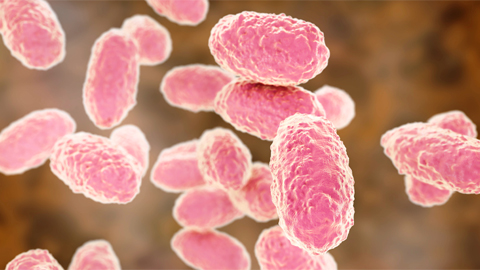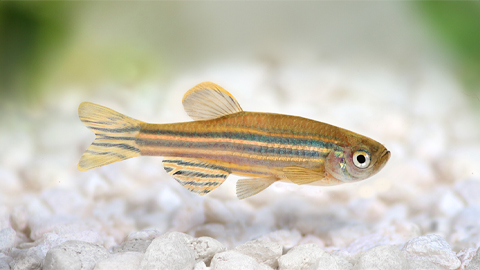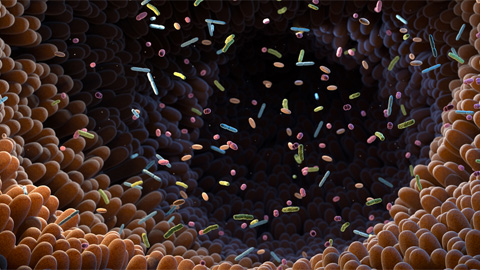Climate change may push the US toward the ‘Goldilocks zone’ for West Nile virus
Michael Keasling of Lakewood, Colorado, was an electrician who loved big trucks, fast cars, and Harley-Davidsons. He’d struggled with diabetes since he was a teenager, needing a kidney transplant from his sister to stay alive. He was already quite sick in August when he contracted West Nile virus after being bitten by an infected mosquito.
Keasling spent three months in hospitals and rehab, then died on Nov. 11 at age 57 from complications of West Nile virus and diabetes, according to his mother, Karen Freeman. She said she misses him terribly.
“I don’t think I can bear this,” Freeman said shortly after he died.
Spring rain, summer drought, and heat created ideal conditions for mosquitoes to spread the West Nile virus through Colorado last year, experts said. West Nile killed 11 people and caused 101 cases of neuroinvasive infections — those linked to serious illness such as meningitis or encephalitis — in Colorado in 2021, the highest numbers in 18 years.
The rise in cases may be a sign of what’s to come: As climate change brings more drought and pushes temperatures toward what is termed the “Goldilocks zone” for mosquitoes — not too hot, not too cold — scientists expect West Nile transmission to increase across the country.
“West Nile virus is a really important case study” of the connection between climate and health, said Dr. Gaurab Basu, a primary care physician and health equity fellow at the Center for Climate, Health, and the Global Environment at Harvard’s public health school.
Although most West Nile infections are mild, the virus is neuroinvasive in about 1 in 150 cases, causing serious illness that can lead to swelling in the brain or spinal cord, paralysis, or death, according to the Centers for Disease Control and Prevention. People older than 50 and transplant patients like Keasling are at higher risk.
Over the past decade, the U.S. has seen an average of about 1,300 neuroinvasive West Nile cases each year. Basu saw his first one in Massachusetts several years ago, a 71-year-old patient who had swelling in his brain and severe cognitive impairment.
“That really brought home for me the human toll of mosquito-borne illnesses and made me reflect a lot upon the ways in which a warming planet will redistribute infectious diseases,” Basu said.
A rise in emerging infectious diseases “is one of our greatest challenges” globally, the result of increased human interaction with wildlife and “climatic changes creating new disease transmission patterns,” said a major United Nations climate report released Feb. 28. Changes in climate have already been identified as drivers of West Nile infections in southeastern Europe, the report noted.
The relationship between lack of rainfall and West Nile virus is counterintuitive, said Sara Paull, a disease ecologist at the National Ecological Observatory Network in Boulder, Colorado, who studied connections between climate factors and West Nile in the U.S. as a postdoctoral researcher at the University of California-Santa Cruz.
“The thing that was most important across the nation was drought,” she said. As drought intensifies, the percentage of infected mosquitoes goes up, she found in a 2017 study.
Why does drought matter? It has to do with birds, Paull said, since mosquitoes pick up the virus from infected birds before spreading it to humans. When the water supply is limited, birds congregate in greater numbers around water sources, making them easier targets for mosquitoes. Drought also may reduce bird reproduction, increasing the ratio of mosquitoes to birds and making each bird more vulnerable to bites and infection, Paull said. And research shows that when their stress hormones are elevated, birds are more likely to get infectious viral loads of West Nile.
A single year’s rise in cases can’t be attributed to climate change, since cases naturally fluctuate by year, in part due to cycles of immunity in humans and birds, Paull said. But we can expect cases to rise with climate change, she found.
Increased drought could nearly double the number of annual neuroinvasive West Nile cases across the country by the mid-21st century, and triple it in areas of low human immunity, Paull’s research projected, compared with averages from 1999 to 2013.
Drought has become a major problem in the West. The Southwest endured an “unyielding, unprecedented, and costly drought” from January 2020 through August 2021, with the lowest precipitation on record since 1895 and the third-hottest daily average temperatures in that time period, a National Oceanic and Atmospheric Administration report found.
“Exceptionally warm temperatures from human-caused warming” have made the Southwest more arid, and warm temperatures and drought will continue and increase without serious reduction of greenhouse gas emissions, the report said.
Ecologist Marta Shocket has studied how climate change may affect another important factor: the Goldilocks temperature. That’s the sweet spot at which it’s easiest for mosquitoes to spread a virus. For the three species of Culex mosquitoes that spread West Nile in North America, the Goldilocks temperature is 75 degrees Fahrenheit, Shocket found in her postdoctoral research at Stanford University and UCLA. It’s measured by the average temperature over the course of one day.
“Temperature has a really big impact on the way that mosquito-transmitted diseases are spread because mosquitoes are cold-blooded,” Shocket said. The outdoor temperature affects their metabolic rate, which “changes how fast they grow, how long they live, how frequently they bite people to get a meal. And all of those things impact the rate at which the disease is transmitted,” she said.
In a 2020 paper, Shocket found that 70% of people in the U.S. live in places where average summer temperatures are below the Goldilocks temperature, based on averages from 2001 to 2016. Climate change is expected to change that.
“We would expect West Nile transmission to increase in those areas as temperatures rise,” she said. “Overall, the effect of climate change on temperature should increase West Nile transmission across the U.S. even though it’s decreasing it in some places and increasing it and others.”
Janet McAllister, a research entomologist with the CDC’s Division of Vector-Borne Diseases in Fort Collins, Colorado, said climate change-influenced factors like drought could put people at greater risk for West Nile, but she cautioned against making firm predictions, since many factors are at play, including bird immunity.
Birds, mosquitoes, humans, and the virus itself may adapt over time, she said. For instance, hotter temperatures may drive humans to spend more time indoors with air conditioning and less time outside getting bitten by insects, she said.
Climate factors like rainfall are complex, McAllister added: While mosquitoes do need water to breed, heavy rain can flush out breeding sites. And because the Culex mosquitoes that spread the virus live close to humans, they can usually get enough water from humans’ sprinklers and birdbaths to breed, even during a dry spring.
West Nile is preventable, she noted: The CDC suggests limiting outdoor activity during dusk and dawn, wearing long sleeves and bug repellent, repairing window screens, and draining standing water from places like birdbaths and discarded tires. Some local authorities also spray larvicide and insecticide.
“People have a role to play in protecting themselves from West Nile virus,” McAllister said.
In the Denver suburbs, Freeman, 75, said she doesn’t know where her son got infected.
“The only thing I can think of, he has a house, they have a little baby swimming pool for the dogs to drink out of,” she said. “So maybe the mosquitoes were around that, I don’t know.”
This article was originally published by Kaiser Health News.
Enjoy reading ASBMB Today?
Become a member to receive the print edition four times a year and the digital edition monthly.
Learn moreGet the latest from ASBMB Today
Enter your email address, and we’ll send you a weekly email with recent articles, interviews and more.
Latest in Science
Science highlights or most popular articles

Meet Donita Brady
Donita Brady is an associate professor of cancer biology and an associate editor of the Journal of Biological Chemistry, who studies metalloallostery in cancer.

Glyco get-together exploring health and disease
Meet the co-chairs of the 2025 ASBMB meeting on O-GlcNAcylation to be held July 10–13, 2025, in Durham, North Carolina. Learn about the latest in the field and meet families affected by diseases associated with this pathway.

Targeting toxins to treat whooping cough
Scientists find that liver protein inhibits of pertussis toxin, offering a potential new treatment for bacterial respiratory disease. Read more about this recent study from the Journal of Biological Chemistry.

Elusive zebrafish enzyme in lipid secretion
Scientists discover that triacylglycerol synthesis enzyme drives lipoproteins secretion rather than lipid droplet storage. Read more about this recent study from the Journal of Biological Chemistry.

Scientists identify pan-cancer biomarkers
Researchers analyze protein and RNA data across 13 cancer types to find similarities that could improve cancer staging, prognosis and treatment strategies. Read about this recent article published in Molecular & Cellular Proteomics.

New mass spectrometry tool accurately identifies bacteria
Scientists develop a software tool to categorize microbe species and antibiotic resistance markers to aid clinical and environmental research. Read about this recent article published in Molecular & Cellular Proteomics.

